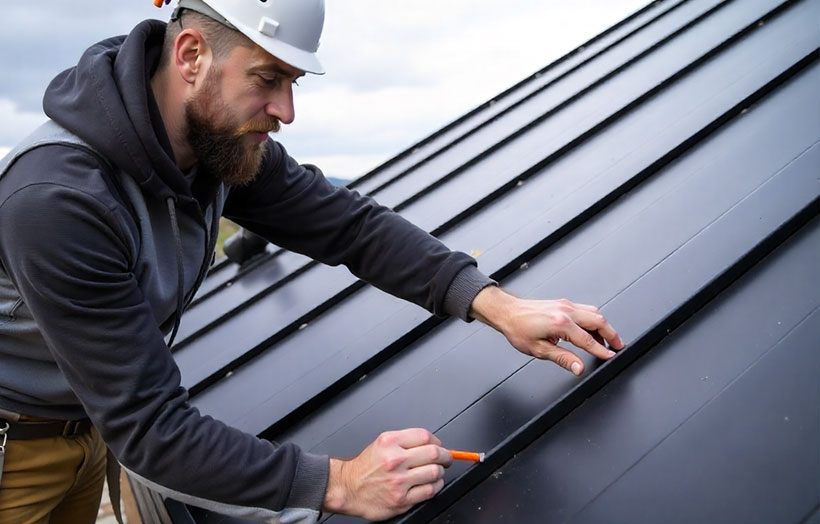
Metal Roof Maintenance in Harsh Climates
Metal roofs require periodic maintenance, especially in regions with extreme temperatures. In areas where daytime temperatures average 46–47°C and nighttime temperatures drop to around 37–38°C, the constant expansion and contraction of metal sheets can cause significant wear. This movement can open up joints at the overlaps (longitudinal joints) and cause screws to loosen or pop out.
Many metal roofs are equipped with gutters and drain channels, which can become a major cause of leaks if not properly maintained. Dust carried by the wind often accumulates in the gutters, and morning moisture adds to the problem by seeping into drains and causing blockages. Without regular cleaning—ideally every quarter—rainwater can collect in the gutter channels during storms and seep into the building through gaps between the roof sheets and the gutter.[Text Wrapping Break]
Quarterly cleaning also helps protect against rust and corrosion. During each cleaning, screws should be tightened, and any rusted screws should be replaced to prevent further roof damage. Metal flashings should be screwed down every 500mm, following standard installation norms. Neglecting these steps can lead to costly repairs later.
Metal roofs often feature fragile skylights that require special attention. Maintenance includes tightening skylight screws and washing the skylights regularly to preserve their appearance and functionality.
A common issue with metal roofs is leakage from end laps, which account for roughly 90% of all leaks in metal buildings. Manufacturers often seal these areas with silicone, paint-based coatings, or PU foams, but these materials typically harden within a season and then crack. Since expansion and contraction are most significant at these points, our solution involves applying imported EPDM and German bonding adhesives. These materials bond exceptionally well to metal surfaces, remain flexible in extreme weather, and withstand temperatures up to 160°C without peeling.
Metal Gutter (Valley & Eave Types) Waterproofing
We provide complete gutter waterproofing solutions, including joint and backfiring protection. Typically, gutters are about 300mm wide, and clogged downspouts filled with mud require thorough cleaning. After cleaning, joints are sealed every 3 meters with cured EPDM solutions. The terminations under the sheets are treated with uncured EPDM to prevent water from backing up when gutters become fully blocked.
